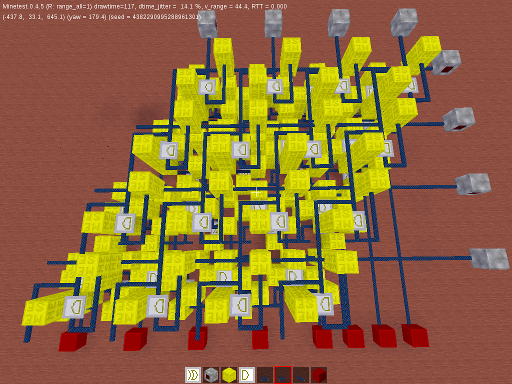This time, part of an competition-winning circuit, changed to be much smaller and simpler: the multiplier. See the original here (with display).
How do you multiplicate two numbers? You multiply each one by each digit of the second one, you shift them the right number of times, and you finally sum the results.
123
x 321
------
123
+ 246
+ 369
------
39483
We will basically just do the same thing, except that we will work in binary. What is good with that is that multiplicating a number by a single digit is easy: indeed, the later can either be 0, and the result will then be 0, or be 1 and the result will then be the former. Summing the results is not difficult, since if we sum them each time we compute a partial product, we only have to sum two numbers at once, which is easy.
101
x 110
------
000
+ 101
+ 101
------
11110
First we will create a multiply-add circuit, which will then be stacked in one direction to get a partial product and summing it to the previous sum. It will then be stacked in the other direction, creating a multiplier.
Here is the multiply-add circuit:
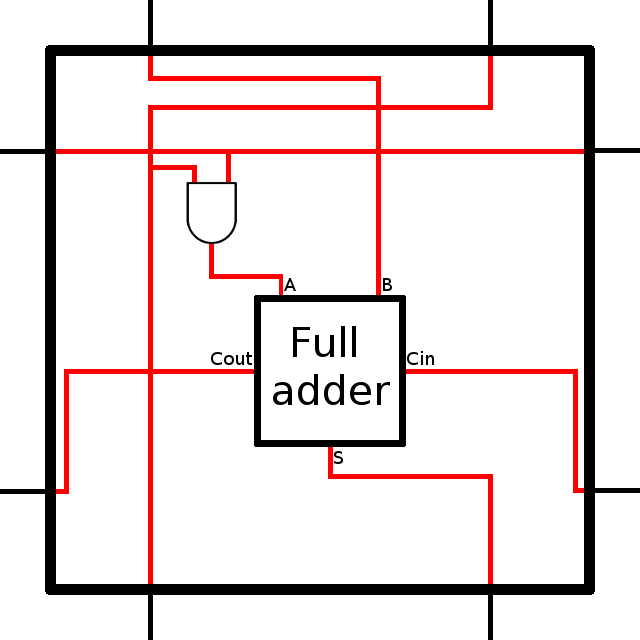
We will then stack them in the following way (all unconnected inputs are set to 0), A and B the input numbers, C the output:
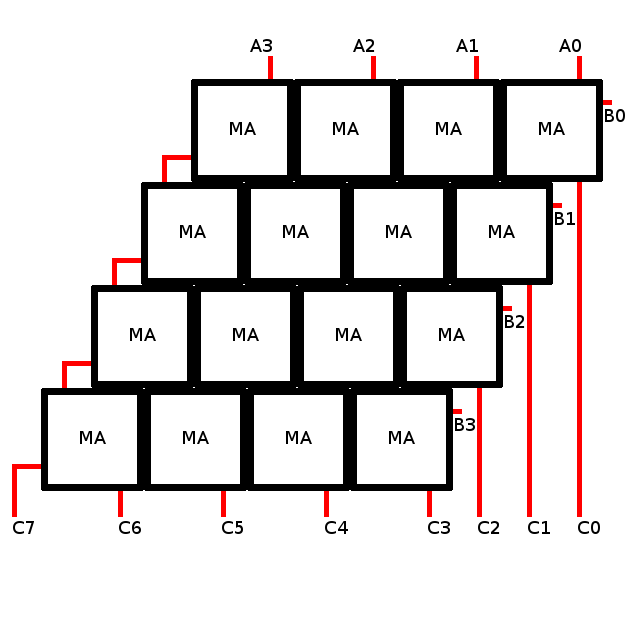
First, build the multipliy-add circuit:


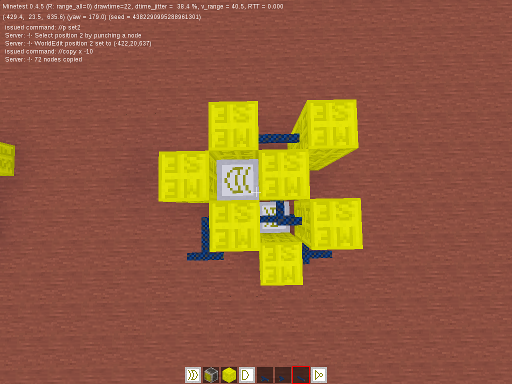
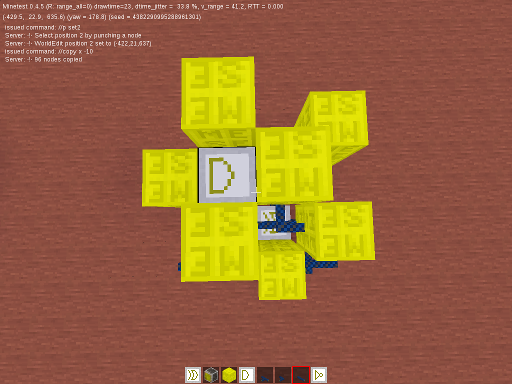
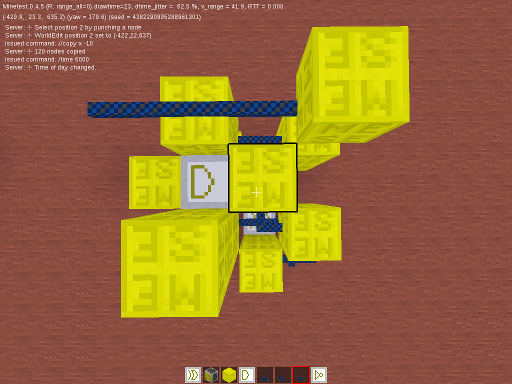
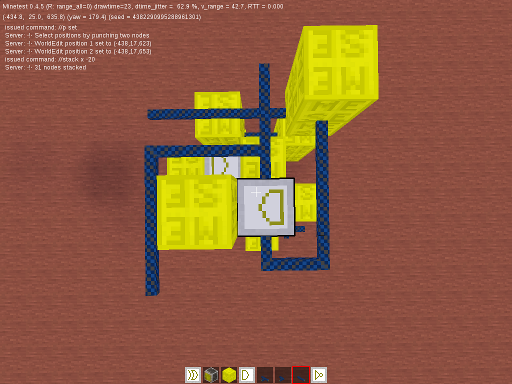
Then, you should stack them like that:
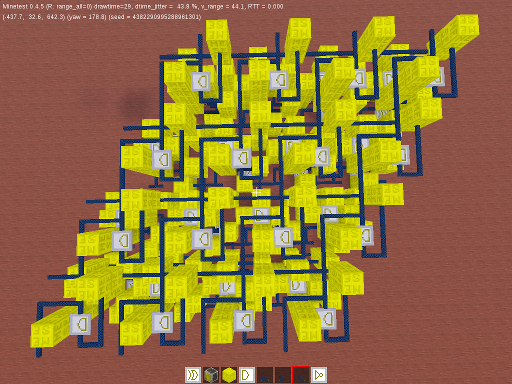
Next, you need to link the carry-out of the leftmost multiply-add circuits to the input of the following ones:
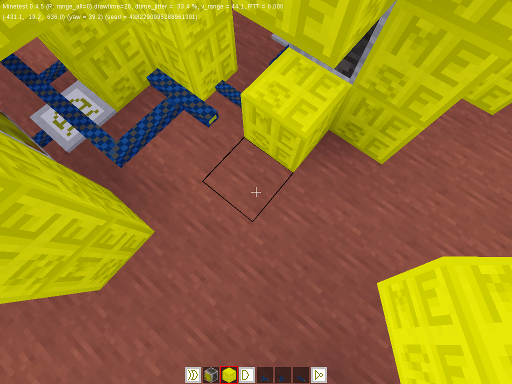
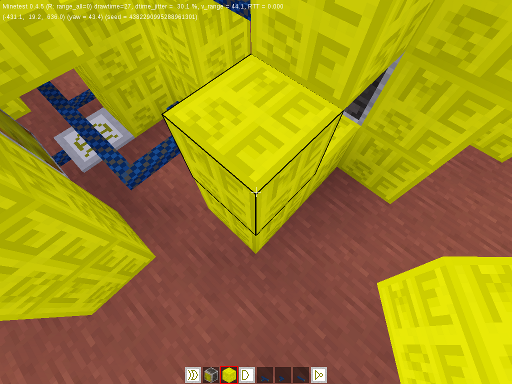
Finally, add some wires and inputs/outputs.
